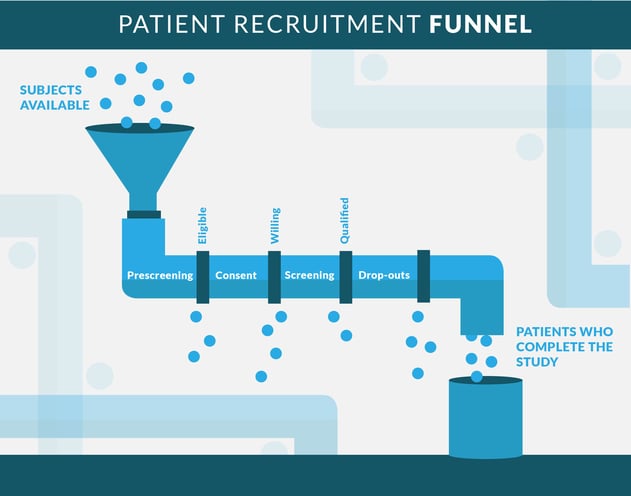
A new batch of dough is placed on the top rack of the oven, and the smell of fresh baked bread is wafting through the house. An hour later, the timer goes off, and you go to check and see if its done. It has a golden brown crust, but something has gone wrong. The bread hasn’t risen. You forgot the yeast.
Just like the yeast for bread, for clinical studies, patient recruitment may not be the very first ingredient you add to a batch of dough, but it could be the most important one. After all, it would be impossible to perform a major study without any patients. But how do you know what will attract them? Understanding what issues are present at any given stage of recruitment, and making the trial as patient centric as possible, are critical for developing a successful clinical trial recruitment process.
STEP 1: RESEARCH
The first critical step in patient recruitment is research. You need to collect information in order to better understand who your patient population, how you can reach them and how many patients you will need.
WHO ARE WE TRYING TO RECRUIT?
Set up an outline of defined demographics of the audience you are trying to reach. What is their age, gender, diagnosis? Maybe you are looking to evaluate an investigational treatment on Alzheimer’s Disease. You would be looking for an older age demographic, probably over the age of 60, of both men and women who have been diagnosed with Alzheimer’s.
HOW CAN WE REACH THE PATIENTS?
In order to successfully reach your audience, demographics will help to answer the question of where to advertise. If you have an older audience, maybe the best method of advertising is radio, newspaper, direct mail, or through doctor’s offices. If your audience is younger, online advertising may be more effective.
However, you still need to look beyond the just demographics to look for the why. Why would a patient with a given disease or health condition want to enroll in your study? Doing market research to find out the why, is going to be key in building the foundation of your advertising. Give them the reason they are looking for to participate in your study.
HOW MANY PATIENTS WILL WE NEED?
The patient recruitment funnel is a “leaky pipe”, and understanding where you are most likely to lose patients in the process will help you to plan ahead and reach and maintain your sample population size.
See the graphic below, to find out where patients are commonly lost in the recruitment process.

STEP 2: CONDUCT THE STUDY
KEEP PATIENTS ENGAGED & HAPPY
Ensuring that your patients engaged and happy, and you will be more likely to keep them. Look for problems or barriers that the patients might be encountering with your study. Are they having trouble with transportation? Should you be providing a transportation service? Are they understanding the study? Do you provide or need to provide a well rounded education program about the study, and their disease or health condition?
You should also consider keeping your patients engaged beyond in-person appointments and scheduling. Send out a newsletter with study updates, send greeting cards for birthdays and holidays, and check in on them in between visits to make sure that they aren’t having any problems.
Trials that involve less hassle, are well explained, and match the goals and needs of patients, are likely to enroll more patients and to keep them throughout the duration of the study.
STEP 3: FOLLOW -UPS
Again, it is important to keep the trial as simple, and hassle free as possible. Patients are not as likely to enter a study that they know requires multiple follow-ups. When developing the study, consider the length and complexity of it from both patient and investigative perspectives. Make follow-ups even easier by scheduling them with routine visits to the office or clinic, and work with the patient’s schedules and preferences as much as possible.
CONCLUSION
Patient recruitment is a crucial ingredient for clinical trial recruitment. Just as you can’t bake a loaf of bread without yeast (I mean…you could…technically…but it wouldn’t rise), unsuccessful recruitment is the number one reason for loss of revenue within a clinical trial. Completing detailed preliminary research, and understanding how to keep your patients happy throughout the process, will set you up for success in your clinical trial.

